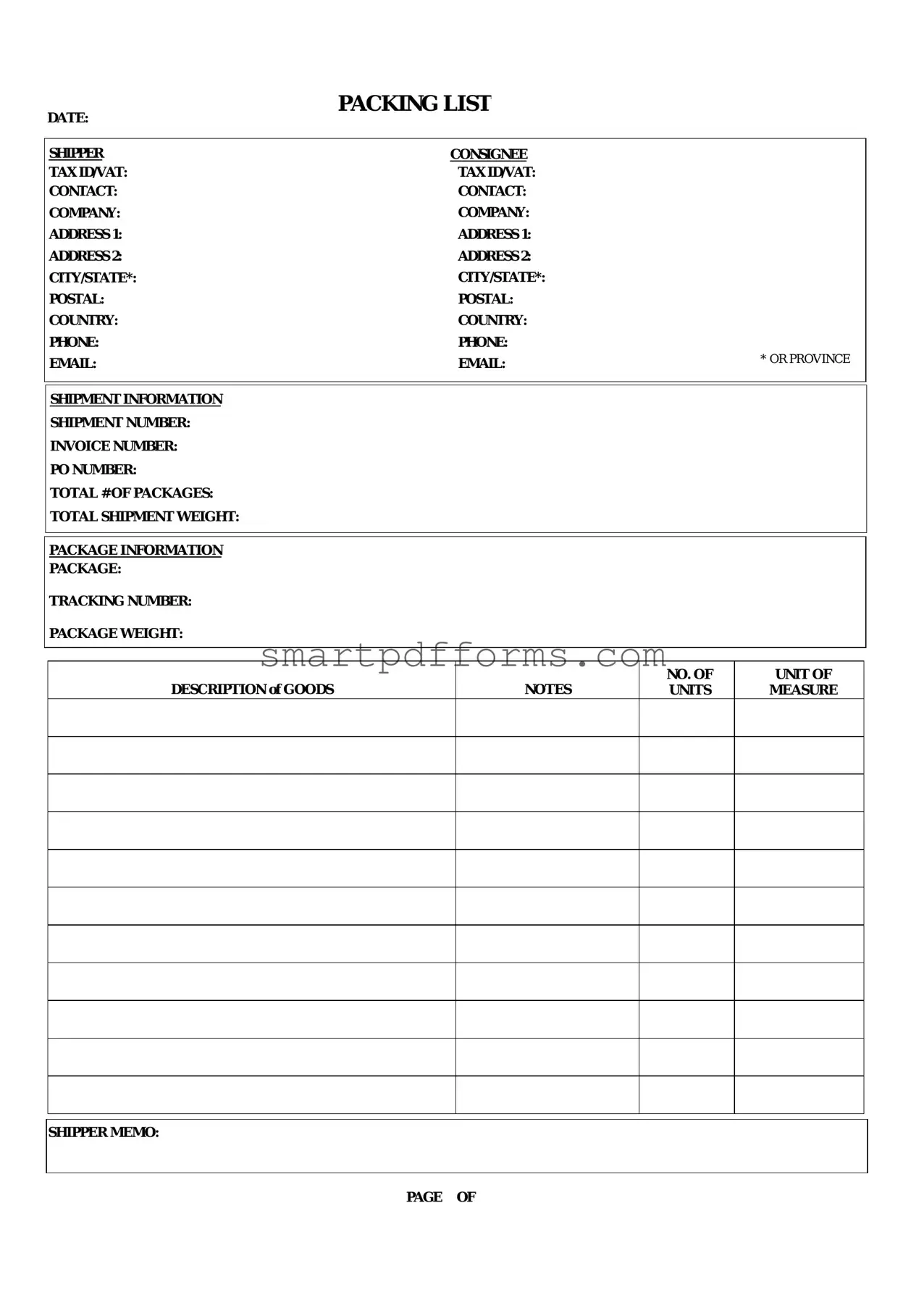Blank Packing List PDF Template
A Packing List form is a detailed document that outlines all the items being shipped from one party to another. This essential checklist helps ensure that nothing is missed during the transportation process and can be used to verify the receipt of goods. If you're planning to send or receive a shipment, make sure to fill out the Packing List form by clicking the button below.
Make This Document Now


